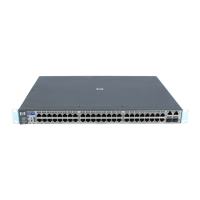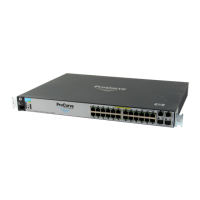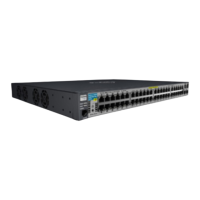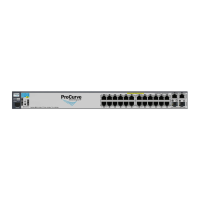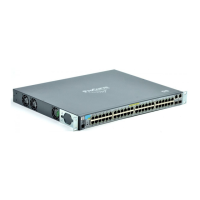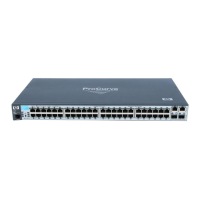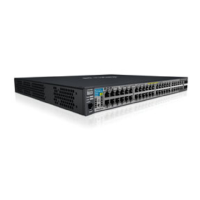9-2
Optimizing Traffic Flow with Port Controls, Port Trunking, and Port-Based Priority
Overview
Overview
This chapter includes:
■ Configuring ports to non-default settings (page 9-2)
These settings include enable/disable, mode (speed and duplex), flow
control, port-trunk group, and port-trunk type. You can also set a
broadcast limit that applies to all ports on the switch.
■ Port aggregation: Creating and modifying a port trunk group (page 9-10)
You can configure static and dynamic trunks. Includes non-protocol
trunks, LACP (802.3ad) trunks, and FEC trunks.
■ Configuring port-based priority for incoming packets (page 9-34)
This feature enables you to prioritize inbound traffic that either
carries an 802.1Q VLAN tag with a priority of 0 (zero) or is not a tagged
VLAN packet.
Viewing Port Status and Configuring Port
Parameters
Port Status and Configuration Features
Note On Connecting
Transceivers to
Fixed-Configuration
Devices
If the switch either fails to show a link between an installed transceiver and
another device, or demonstrates errors or other unexpected behavior on the
link, check the port configuration on both devices for a speed and/or duplex
(mode) mismatch. To check the mode setting for a port on a Switches 2650
and 6108, use either the Port Status screen in the menu interface (page 9-5) or
show interfaces brief in the CLI (page 9-6).
Feature Default Menu CLI Web
viewing port status n/a page 9-5 page 9-6 page 9-9
configuring ports See Table 9-9-1
on pages 9-3
and 9-4.
page 9-5 page 9-8 page 9-9
!Software.book Page 2 Thursday, October 10, 2002 6:10 PM
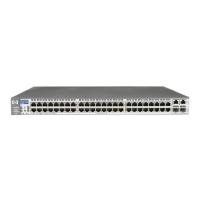
